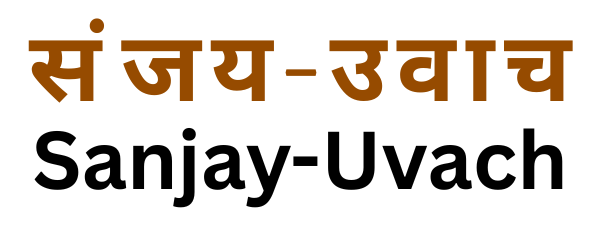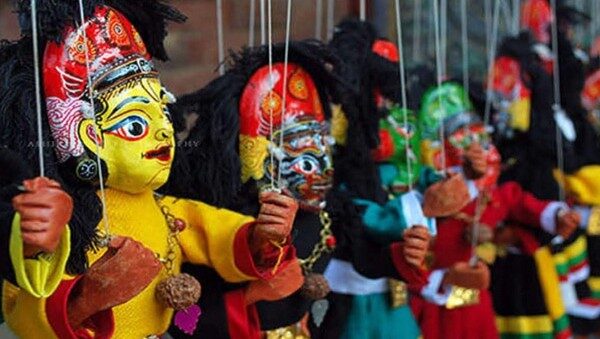Three questions trouble me a lot . The questions are apolitical (not many would agree) and raise a host of questions as regards the objectivity of the people helming the polity (and the judiciary too) of our country.
ONE. I am from Uttar Pradesh and had my college education under the State Education Board. I never had any issue with the content of our history textbooks as I had no knowledge that our history had a much larger canvas painted upon by many individuals and institutions. Naïve it may sound, I always thought I am indebted only to those who find mention in my history textbook. The contribution of others was completely lost on me. Unlike now, we had no technology-enabled platforms to scout for facts and better understand the world we lived in. A case in point is the rulers / warriors of prominence. In my textbooks, there were very brief mentions of Maharana Pratap, Chhatrapati Shivaji Maharaj, Maharaja Ranjit Singh and Rani Laxmibai. The Maurya, the Gupta and the Chola dynasties were written about in great hurry. Conspicuous by their absence (about whom I came to know much later in my adult life) were Krishnadevraya (of Vijayanagara empire), Ajatsatru (of Magadha), Pulakeshin II (of the Chalukya empire), Thirumalai Nayak (of Madurai Nayak dynasty), Lachit Borphukan (Commander of the Ahom army), Baba Banda Singh Bahadur (the legendary Sikh military leader) and Birsa Munda (the millenarian, independence leader). On the other hand, generous space was provided to the Mughals (Babur-Humayun-Akbar-Jahangir-Shahjahan-Aurangzeb), Muhammad bin Qasim, Mahmud of Ghazni, Muhammad Ghori, Timur Lung, Nader Shah, Ahmad Shah Abdali and Alexander the Great.
I wonder if the invaders, marauders and vicious rulers had contributed more to making of our country and, ergo, deserved to be immortalized in our memories?
TWO. All places of religious import to Muslims, with the exception of Ajmer Sharif (Ajmer), are run privately sans any interference by any government.. The Sikh gurudwaras are run independently by SGPC where government has no involvement. Likewise, Christian churches, cathedrals and basilicas are run by various religious denominations without allowing governments any say in its affairs. Contrast this with the places of worship most revered by Hindus. Meenakshi Temple (Madurai), Venkateswara Temple (Tirupati), Ramanathaswamy Temple (Rameswaram), Sri Ranganathaswamy Temple (Srirangapatna), Ayyappa Temple (Sabarimala), Guruvayoor Temple (Guruvayur), Mata Vaishno Devi (Katra), Shree Jagannatha Temple (Puri) and Kashi Vishwanath Temple (Varanasi) are controlled by the state governments.
Growing up in an average Hindu family (not very ritualistic, though) in Uttar Pradesh , I continue to hold that the South of India follows the most-original Hindu practices and leads relatively unadulterated way of life that Hinduism propagates. Ironically, it’s the Southern states (Kerala, Tamil Nadu, Andhra Pradesh, Telangana and Andhra Pradesh), (also, Odisha in the East) which have enacted laws to manage these very Hindu temples, allowing government control over, inter alia, the finances and appointments. Gullible me, I thought our constitution prescribes separation of religion and state whilst affording the citizenry religious freedom and the religious institutions right to manage their affairs. I searched the net to look for the rationale of state control over the Hindu temples. Look what did I discover! Lack of transparency & accountability, corruption, mismanagement, utilization of temple revenues for greater social welfare, preservation of historical & cultural relevance, promotion of inclusivity by ending domination (of certain castes or sects or families) and, funnily, secular oversight (to prevent influence of fundamentalist or regressive ideologies) were touted as the key reasons. Correct my understanding, didn’t we, in India, always want to keep our institutions out of the clutches of governments precisely for (most of) these reasons?
Can the governments ever grow ispat-ke-andakosh (testicles made of steel) to exercise similar control over the places of worship of other religions? For similar reasons?
THREE. Whilst drawing from the Places of Worship Act of 1991 and the Waqf Act of 1995, I concede limitedness of my understanding of all laws (let alone these two Acts). I also acknowledge that the best brains have already spoken, for or against, on the subject.
The Places of Worship Act aims to prevent conversion of any place of worship and to ensure maintenance of the religious character of any place of worship as it was on 15th August, 1947. In other words, the status of a place of worship cannot be changed, as envisaged in the Act, if it is more than 78 years old today no matter if there is overwhelming evidence to the contrary.
The Waqf Act explains waqf as a property permanently donated by Muslims for a specific religious, charitable, or private purpose. Waqf, it’s believed, came in existence around the time the Sultanate of Delhi was established (1206-11). Here is a hypothetical case of a farmer whose family has been resident of his village for generations, holds a valid ID and possesses a Khatauni / Gata evidencing the ownership of his farm-land. As the Waqf Board has “reasons to believe” that his farmland is a waqf property, an enquiry is conducted by the Board. A notice is served, thereafter, on the farmer that the land he (as also his ancestors) had been tilling for the last 500 years was waqf-ed orally by Ibrahim Lodi just before the Battle of Panipat in 1526 and, therefore, is a waqf property. The hapless farmer cannot approach a Civil Court because the Act requires that all related disputes are first adjudicated by a Waqf Tribunal (read Waqf Board itself). In other words, the status of a land can be changed no matter howsoever underwhelming the evidence that it was waqf-ed orally 500 years back may be. If one goes by news reports, the checks & controls envisaged in the Act to create a semblance of equity have not deterred unbridled claims of waqfs.
Imagine an Indian goes to the USA and insists that he would drive on the left of the road. Worse, still. Half way driving on the left, he decides that he would cover the remaining half in the reverse gear. Can the polity and the judiciary of our country give the citizenry a sense of equity and address this contraflow lane reversal created by the two Acts?
ONE-TWO-THREE. The apologists will want to underline the futility of any response to these questions. The woke will highlight the political dimensions thereof, given today’s political climate. But, to me, answers to the questions are important to understand the underlying agenda and caution the generations to come.


It’s deeply ironic that Indian history textbooks often omit monumental events like the Battle of Saragarhi, where 21 Sikh soldiers of the 36th Sikh Regiment stood their ground against an estimated 10,000 Afghan tribesmen in 1897. This act of extraordinary bravery is commemorated annually in the UK on September 12th, yet remains largely unrecognized in mainstream Indian education .
A deeper issue lies in our disconnection from the very texts and traditions that define our spiritual heritage. While other communities—Muslims with the Quran in Arabic or Urdu, Christians with the Bible in English—have direct access to their scriptures, many of us were never taught Sanskrit, the language of the Vedas, Upanishads, and countless other foundational texts. We recite rituals without understanding them, relying on oral tradition rather than textual engagement.
In contrast, regions like South India, where Tamil is widely spoken and preserved, have maintained a more direct and living connection to Sanatan Dharma. During my time in Bangalore-South, I met Tamil-speaking friends who could recite rituals with clarity and meaning—rituals that echoed those I saw practiced by my grandparents in Lucknow, yet which I could never fully access due to the language barrier.
Now, with the time and intent to explore these roots, I find the greatest challenge is not curiosity—but access. Most sacred texts remain untranslated or poorly translated, and even when they are, the essence often feels lost—like playing a game of Chinese whispers. Whether in Sanskrit or Tamil, the path to understanding our own heritage remains frustratingly opaque.